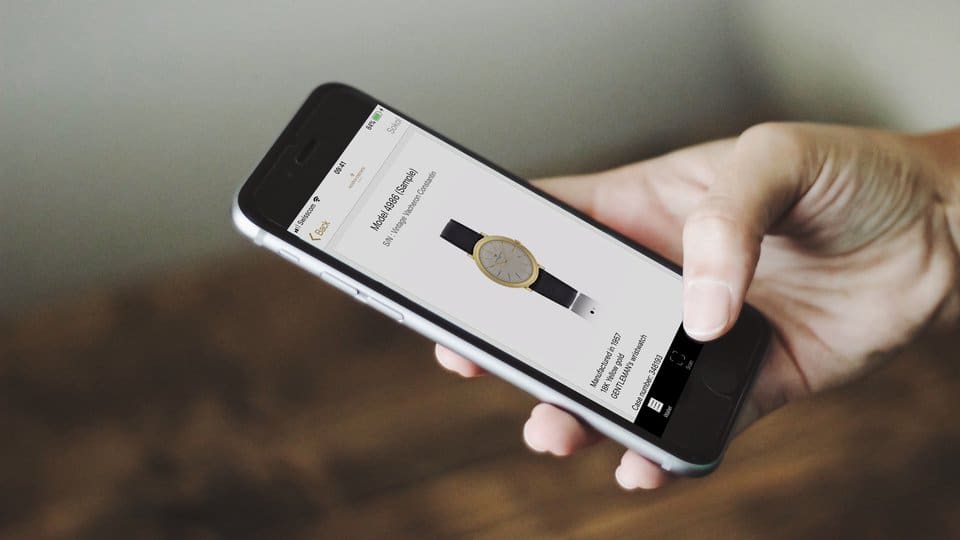
A growing number of players in the luxury industry like Vacheron Constantin, LVMH and Farfetch are embracing blockchain technology, marking a significant shift in the market towards the use of new technologies that could have far-reaching implications.
Last month, Farfetch revealed it was joining a blockchain network. The announcement that it had partnered with Facebook and other companies like Uber, eBay and Visa to co-found the Libra Association, an independent, not-for-profit membership organisation that supports a new cryptocurrency, marked a significant shift in how luxury companies are engaging with blockchain adding to signs that the industry is becoming more open to adopting new technologies to stay ahead of the curve.
While blockchain, which is defined as a decentralised, distributed ledger of information, is still relatively new and in its infancy, it represents a huge opportunity for the luxury industry in terms of transformation by finding solutions to issues like product authentication and life-cycle transparency.
It is especially important for the luxury market to consider, where historically there is little to no authentication of genuine products on the second hand market. Luxury brands reportedly lost $30.3 billion (€27 billion) to counterfeited goods through the internet in 2017, according to a report by Research and Markets.
“We believe blockchain will benefit the luxury industry by improving IP protection, transparency in the product lifecycle and – as in the case of Libra – enable global frictionless e-commerce,” said José Neves, chief executive and co-chair of Farfetch, in a statement in June.
Growing momentum
So, when Farfetch made its announcement, it added to the growing momentum in the luxury industry that blockchain is here to stay particularly as LVMH had previously revealed in May that it was developing its own blockchain platform called AURA. LVMH said it would use AURA as a way to track its luxury goods and prove their authenticity, and that several brands at the luxury conglomerate like Louis Vuitton and Parfums Christian Dior were already involved, with plans to implement the technology across its other brands in the future.
Likewise, for Swiss luxury watch brand Vacheron Constantin, which also announced in May it was going to pilot a blockchain programme that enabled it to provide digital certificates for its Les Collectionneurs series of vintage watches, the potential uses of the technology meant it had the opportunity to effectively combat counterfeiting and offer its clients a guarantee of quality control, data protection and authenticity.
“We believe that blockchain technology is very revolutionary,” Angela Au-Yeung, Chief Digital Officer at Vacheron Constantin told Luxury Society in an interview. “It has a lot of potential use cases that cross different industries and for us in particular, it was very relevant in helping to build trust with our clients.”
The decision to implement blockchain was something Au-Yeung and her colleagues had been considering for quite a while. “We were really trying to understand the technology for some time, and there were many colleagues who have been interested in the topic and they were doing their own research. And it so happened that the supply chain and our operations team were also exploring the same technology in their own application and use cases, and … we managed to align all the stars and we decided that this is actually a very nice proof of concept to start everything.”
One of the most important things that Vacheron Constantin focused on when exploring the use of blockchain was how, despite the complexity of the technology, its customers would benefit. For example, with the use of blockchain, the brand is now able to communicate a product’s regular maintenance needs by following the product rather having to have each client submit their personal details to be contacted for service updates.
“We try to focus on what benefits the technology could bring to the party, all the actors in the whole value chain,” said Au-Yeung. “In the future, even without the client giving up his or her personal information, we will have the means to communicate with them. Based on the product life cycle, but not based on the client itself. From now on, we can also follow the product. which is another way communicate with the client.

Angela Au-Yeung, chief digital officer, Vacheron Constantin. Photo: Courtesy.
Blockchain also presents an exciting opportunity to learn and develop as a brand, says Au-Yeung.
“It’s really about taking calculated risks to innovate,” she said. “Innovation has always been part of our Maison DNA. Piloting initiatives like this with novel technology which is still in its nascent stage and developing fast, showcases how we are daring to take calculated risks to innovate. We are looking forward to learning from the experience together with our clients."
The benefits of blockchain could help bring more standardisation and transparency to the luxury market, particularly as consumers demand more information about the origins of their products and the second-hand luxury goods market grows. Companies who are more open about their processes, and a product’s authenticity and legitimacy, are more likely to attract younger consumers who value transparency and sustainability efforts from companies.
“Consumers are increasingly interested in the origins of the products they are purchasing to validate anything from the authenticity of the product to the ethics of the labour that produced it,” Sumedha Deshmukh, Blockchain Specialist at the World Economic Forum, told Luxury Society.
A new operating model
“As such, luxury brands like LVMH appear to be interested in blockchain for track and trace purposes. They are also exploring blockchain for the protection of intellectual property. Smart contracts also offer the potential to automate business processes such as making vendor payments and releasing documents, which may be appealing in an increasingly global and complex supply chain,” she added.
Looking forward, Au-Yeung hopes to see more luxury brands join in the early adoption of blockchain to help drive further innovation with the technology in the industry and diversify the number of use cases.
“We look forward to innovating together as a category, testing different use cases and learning from one another. Our goal are to progress as a category on the technological front, to meet and even exceed the expectations of our clients.”
“Blockchain requires a new operating model,” added Deshmukh. “For many industries, blockchain’s value is maximised when used in collaboration with other industry players – often competitors. This model of operating as a consortium can be disruptive and change the way luxury brands operate.”








